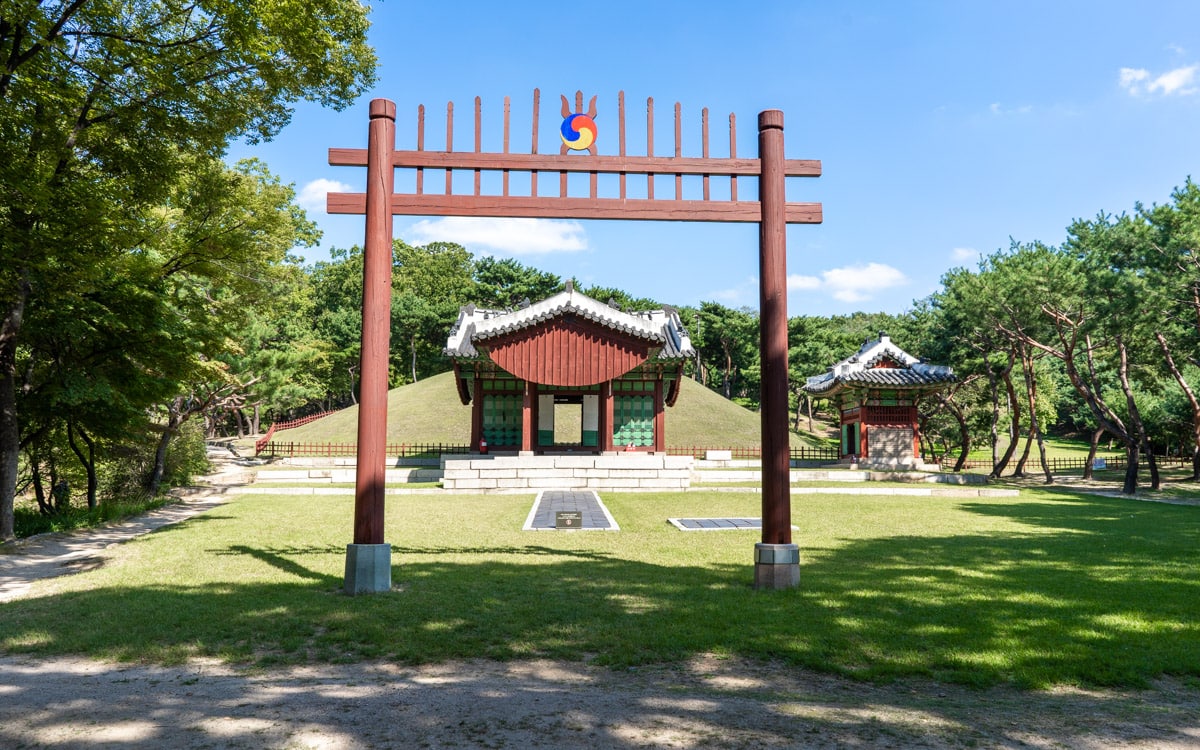
In Korean architecture, a hongsalmun is a red spiked gate used for entering sacred places including Korean Confucian sites. You will find these gates at shrines, tombs, and educational institutions such as hyanggyo and seowon. These stand-alone gates act as a boundary between the ordinary, profane world and a sacred, rarified realm.
Hongsalmun, also known as hongjeonmun or hongmun, feature two round vertical posts and two horizonal posts. Vertical red spikes run from the lowest horizontal post up to the top of the gate. The name hongsalmun means “gate with red arrows” referring to these red spikes. Hongsalmun has no roof or door.
The top of the gate features two symbols. The first symbol is a three spear trident known as trishula. The second symbol is a taegeuk, the red and blue yin and yang image which appears on the South Korean flag.
The architecture of hongsalmun, along with the Japanese torii and Chinese paifang, was influenced by the Indian torana gateway. While these gates serve a similar function, each architectural style differs from country to country.
Last Updated on Dec 17, 2021